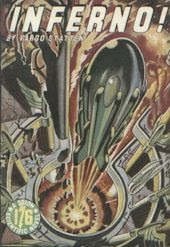 The December 2007 issue of Fantasy & Science Fiction contains a good selection of well-written stories. There are six stories - two novelettes and four short stories. Two of which are set in the future off Earth, one is set in the past, and the remaining stories are set in the present day, or something near to it.
The December 2007 issue of Fantasy & Science Fiction contains a good selection of well-written stories. There are six stories - two novelettes and four short stories. Two of which are set in the future off Earth, one is set in the past, and the remaining stories are set in the present day, or something near to it.The cover story is the novelette "Finisterra" by David Moles, with cover art by Cory and Catska Ench. In "Finisterra" an aeronautical engineer takes a job on a world featuring island-sized floating creatures called zaratán. Her employer and his alien associates are poachers. They are killing the zaratanes, a protected species, for profit.
The other novelette is "The Bone Man" by Frederic S. Durbin, in which a creepy man is sidetracked to a small town on what happens to be the day of the Hallowe’en Parade. The star of the parade is the Bone Man, a dancing skeleton.
In the short story "Osama Phone Home” by David Marusek, there is a secret American organization dedicated to bringing Osama bin Laden to justice. Their plan uses spooky, futuristic, but not impossible sounding, technologies.
"Don't Ask" by M. Rickert has mothers trying to cope with having their boys stolen to run with the wolves, and having them return home not only older but different.
In "Who Brought Tulips to the Moon?" by S.L. Gilbow a healthy old man, his impatient daughter, and her husband go to the moon to Smooth Passing, a mortuary-like company that helps you pass away.
"Stray" by Benjamin Rosenbaum and David Ackert features a worn out immortal trying to fit into an African American community in the 1930s.
The stories in this issue of Fantasy & Science Fiction magazine were, at times, thought provoking. Each had some sort of emotional conflict or tension. My least favorite story was "The Bone Man" because of its thug of a protagonist. There weren't any stories that I would shout about from a mountaintop, but overall a good magazine to read.
(For more on these stories, and others, visit my blog Short Reviews of SF and fantasy short fiction)




